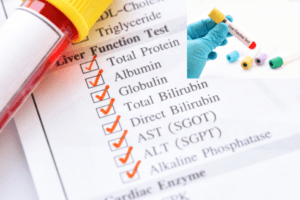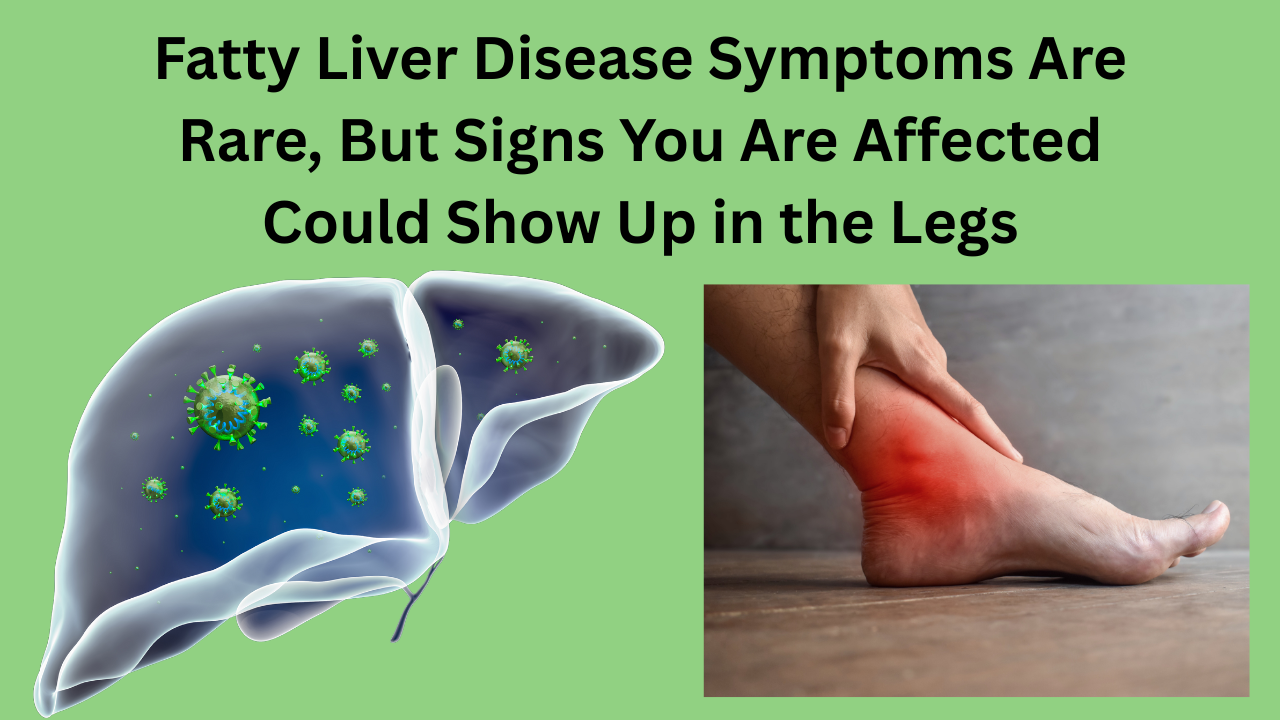Fatty Liver Disease Symptoms Are Rare, But Signs You Are Affected Could Show Up in the Legs
Fatty liver disease is a silent threat that can be understood with small clues.
Hepatic steatosis, which is another name for fatty liver disease, often gets worse without anyone noticing. Most people don’t know it’s there until problems start to happen. Even though the first warning signs are often found in the abdomen or with abnormal blood tests, they may also show up in the legs.
Millions of people around the world still have this long-term condition. Knowing its less common physical signs, especially in the lower limbs, can help with early evaluation and prompt treatment.

What does fatty liver disease mean?
When too much fat builds up in liver cells, it’s called fatty liver disease. One can categorize it into two main groups:
Fat buildup in the liver that isn’t caused by drinking alcohol is called non-alcoholic fatty liver disease (NAFLD). It’s often caused by a bad diet, being overweight, or metabolic problems.
Alcoholic fatty liver disease (AFLD) is caused by drinking too much alcohol over a long period of time.
In their later stages, both diseases can get worse, leading to non-alcoholic steatohepatitis (NASH), liver fibrosis, cirrhosis, and finally liver failure.
Why symptoms in the legs might be the hidden warning signs
The liver is very important because it filters blood, makes proteins, and controls nutrients. When it stops working properly because of too much fat, its effects are felt all over the body, including in the leg’s vascular and lymphatic systems.
1. Swelling in the ankles and legs
What It Means
Edema, or swelling from holding on to fluid, especially in the legs, is one of the most common signs of severe fatty liver disease. Albumin is a protein made by the liver that helps keep blood pressure and volume steady. When the liver’s efficiency goes down:
When amounts of albumin drop, fluid leaks into tissues.
This fluid moves into the legs and feet because of gravity, especially after standing for a long time.
When to Be Afraid
The swelling doesn’t go away overnight and stays there.
Whenever there is tiredness, stomach pain, or weight gain.
2. Losing muscle mass and long, thin legs Despite Putting On Weight
What It Means
People who have chronic liver disease often lose muscle strength, which is called sarcopenia. It’s strange that the body stores fat (usually around the middle), but the legs get thin and weak.
This is because
Malnutrition caused by a liver that isn’t working right.
Inflammation that doesn’t go away and biochemical imbalances.
Less physical exercise because of being tired and uncomfortable.
3. Spider veins and dark spots on the legs’ skin
What It Means
Spider angiomas are small groups of blood vessels that look like webs and can show up on the legs of people with liver disease. These are signs of higher estrogen levels because the liver isn’t getting rid of toxins as quickly.
Here are some other signs:
The coloring is reddish or brownish.
It’s easy to get hurt, especially on the shins.
Poor circulation and portal hypertension can make veins stand out.
4. Skin that is itchy and dry on the lower limbs
What It Means
Bile is an important chemical for breaking down fats, and the liver helps make it. Fatty liver disease can make it hard for bile to move, which can cause bile salts to build up in the blood.
This could lead to:
Having itchy skin, mostly on the legs and feet.
There are scaly, dry spots that look like eczema.
Skin that gets thicker sometimes, mostly around the legs.
5. RLS, or Restless Legs Syndrome
What It Means
When someone has liver disease, they may feel the need to move their legs even when they’re not doing anything. People think this has something to do with
A lack of electrolytes.
Vitamin and mineral deficits (especially iron and magnesium).
Nerve problems are linked to liver problems.
RLS can make it very hard to sleep, which can make you even more tired than you already are from liver problems.
6. Legs that tingle, feel numb, or have neuropathy
What It Means
Peripheral neuropathy is when nerves in the legs get hurt. Advanced fatty liver disease can cause it. This is what patients often say:
Feeling like pins and needles.
Having numb or burning pain in your feet and legs.
Having trouble keeping your balance or walking.
This could be because of diabetes, metabolic imbalances, or vitamin deficits that make the liver work less well.
Heart disease and fatty liver are more likely to happen if you have certain risk factors.
Type 2 diabetes, also known as insulin resistance.
Lots ofThe food is rich innd cholesterol.
This is a sedentary way of life.
A bad diet is one that is full of sugar, fried foods, and processed carbs.
PCOS in women, or polycystic ovary syndrome.
sleep apnea, which keeps important organs from getting enough oxygen.
If you have any of these risk factors and leg-related symptoms, you should definitely get checked for fatty liver disease.

How to Make Sure You Have Fatty Liver Disease
A fatty liver is often found by accident during blood work or imaging tests. Some diagnostic tools are
Liver function tests (LFTs) are used to find enzymes that are too high.
You can use ultrasound or FibroScan to check for fat buildup.
an MRI or CT scan if the case is complicated.
A liver biopsy is the most accurate but painful test.
Treatments and changes to your lifestyle that can cure fatty liver
1. Slowly lose weight
Losing just 5 to 10 percent of your body weight can cut liver fat by a lot. Crash diets are bad for you, so try to make changes that will last.
 Diet that is good for the liver
Diet that is good for the liver
Eat like people in the Mediterranean:
It is packed full of nuts, salad veggies, olive oil, beans, and lean meats.
2. Not a lot of processed foods, red meat, extra sugars, or plain carbs.
3. Keep moving your body
Being active on a regular basis makes insulin work better and burns fat in the liver. It can help to walk quickly for at least 30 minutes every day.
 4. Stay away from drugs and alcohol
4. Stay away from drugs and alcohol
For people with NAFLD, even small amounts of alcohol can make liver damage worse. Take extra care when taking herbal vitamins and over-the-counter painkillers like acetaminophen.
5. Watch your lipids and blood sugar
Take medications and change how you live to control underlying diseases like diabetes, high cholesterol, and high blood pressure.
When you should see a doctor
Talk to a doctor if you have any of these symptoms:
Leg swelling or skin changes persist.
Feeling tired or having stomach pain for no reason.
High levels of liver enzymes in regular blood tests.
A history of being overweight, having diabetes, or having liver disease in the family.
Early discovery can stop liver damage that can’t be fixed and make life a lot better.
The liver’s silent story could be told by the legs.
It’s possible that the legs can tell you a lot about your liver health. Fatty liver disease can be caught early by noticing small signs like itching, swelling, weakness, or changes in the liver’s color. The best ways to fight this rising epidemic are still to prevent it, find it early, anintroduce changes toto our lifestyles.

